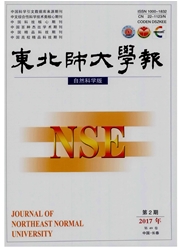

 中文摘要:
中文摘要:
借助城市首位度指数、城市规模基尼系数、城市等级规模分布不平衡指数、位序-规模法则模型及相关分析法,对东北地区城市体系等级规模结构演变及机制进行了定量和定性研究.结果表明:东北地区城市体系中首位城市沈阳在发展的同时其他等级城市发展势头也很强劲;各规模等级城市人口总体处于均匀分布状态;城市规模分布日益均衡;城市规模分布具有明显的空间指向性;影响城市等级规模结构演变的因子主要有经济因素、交通因素、政策因素、自然因素,四大因素通过作用城市数量、城市规模、城市结构等方面,最终影响城市等级规模结构的演变.
 英文摘要:
英文摘要:
This paper makes quantitative and qualitative research on evolution and mechanism of thehierarchical size structure in northeast China, with the methods of city primacy ratio index, city Ginicoefficient, city hierarchical scale distribution imbalance index, rank-size rule model and othercorrelational analysis methods. The results showed that. with the development of Shenyang--theprimate city in the northeast urban system, the development momentum of other hierarchical scalecities is also very strong; the population of each hierarchical scale city is in a state of uniformdistributionurban size distribution is becoming more and more balanced; urban size distribution hasobviously spatial directivity;there are four major factors which affects the evolution of the hierarchicalsize structure, including economic factor, transportation factor, policy factor, natural factor. Thesefactors eventually affect the evolution of the hierarchical size structure by the number of city, city size,urban structure, etc.
 同期刊论文项目
同期刊论文项目
 同项目期刊论文
同项目期刊论文
 期刊信息
期刊信息
